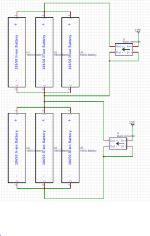ningaman151 said:
I don't know why you keep dumbing me down, I'm a final year electronic engineering student like I said, I've used op amps and other electrical components strenuously. I've also done some other electronics projects such as a drone, a buck boost converter, a near field card reader (done on pcb) and other projects that require good knowledge of electronics. So in terms of electronics I have a good ground, no need to relearn what I already know.
Not trying to "dumb you down". There've been several examples of your posts that don't show your education or experience (which you hadn't said anything about, making it impossible for us to know), so I each time had to make a choice between replying to the knowledge already shown, or assuming you knew exactly what you are doing and just letting you run with it and make pretty severe mistakes.
We get lots of people here new to ebikes that know something about electronics, but not much, that post the same way you do, even having done other electrical and electronics projects before, but still making mistakes that they wouldn't if they were to look up the spec sheets and/or principles for some of the parts they use, and if I assumed they knew what they were doing and let them go, they wouldn't end up with a working project (at least not without a lot of frustration and failed components, or at least things that simply won't work together, either at all, or the way they want them to).
More than a few people come here wanting to design their own controllers, motors, chargers, batteries, etc., but they don't know anything about any of it...and may post the same way you have, not giving us any of their experience level, and if we assume they know everything they need to, without telling them what they're going to need to learn, they aren't going to be able to complete their project, and they won't even find out they need to know these things until "too late" (too far in, too much spent, not enough time left, etc).
So I find it's better to assume someone that doesn't say or show their knowledge or experience level that they dont' have any, and help them more, rather than assuming they knwo everything already, and give them only very basic answers that probably wont' help htem.
So based on my prior experiences with a decade of learning and helping out here, and my own decades-old electronics technician degree, I replied to you based on what I saw.
Now that I know you're experienced at all this stuff, I can assume you know what you're doing and only answer the direct questions you have, and avoid explaining stuff you already know without correcting you.


